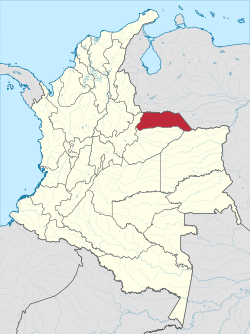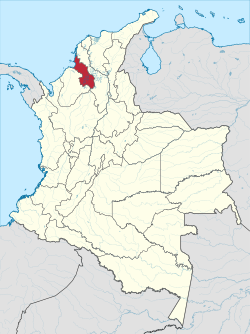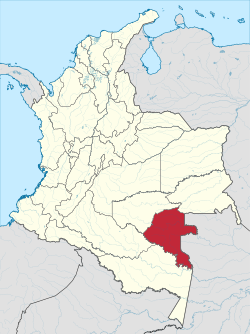This article includes a list of general references, but it lacks sufficient corresponding inline citations .(March 2009) |
| Capital district and Colombian regions Distrito Capital y los Departamentos de Colombia (Spanish) | |
|---|---|
 | |
| Category | Unitary state |
| Location | Republic of Colombia |
| Number | 32 Departments 1 Capital District |
| Populations | 48,932 (Vaupés) – 8,906,342 (Capital District) |
| Areas | 50 km2 (19.3 sq mi) (San Andrés) – 109,665.0 km2 (42,341.89 sq mi) (Amazonas) |
| Government |
|
| Subdivisions | |
Colombia is a unitary republic made up of thirty-two administrative divisions referred to as departments (Spanish: departamentos, sing. departamento ) and one Capital District ( Distrito Capital ). [1] Departments are country subdivisions and are granted a certain degree of autonomy. Each department has a governor (gobernador) and an Assembly (Asamblea Departamental), elected by popular vote for a four-year period. The governor cannot be re-elected in consecutive periods.
Contents
- Internal subdivisions within departments
- List of current departments
- Indigenous territories
- History
- Gran Colombia
- Republic of New Granada
- Republic of Colombia
- Historical predecessors of current departments
- Map gallery
- See also
- References
- External links
Departments are formed by a grouping of municipalities (municipios, sing. municipio ). Municipal government is headed by mayor (alcalde) and administered by a municipal council (concejo municipal), both of which are elected by popular vote for four-year periods.


















































